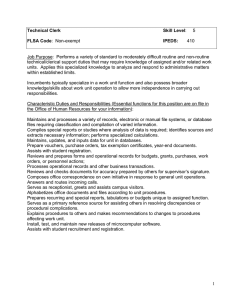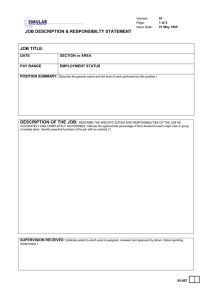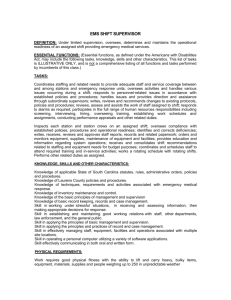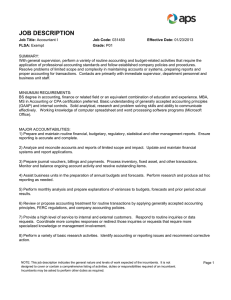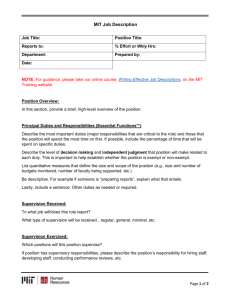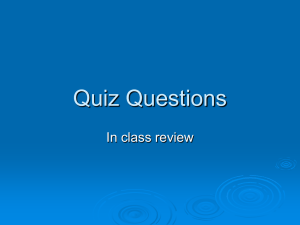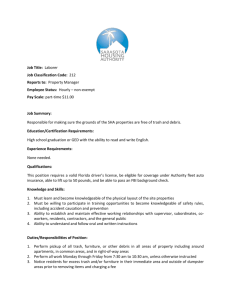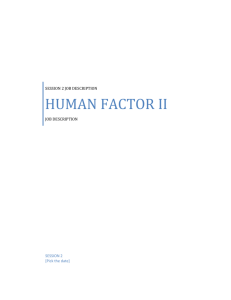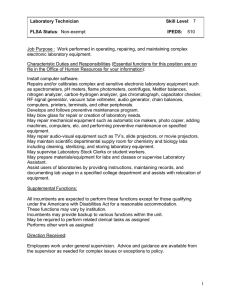2- Analyzing Work & Designing Jobs
advertisement
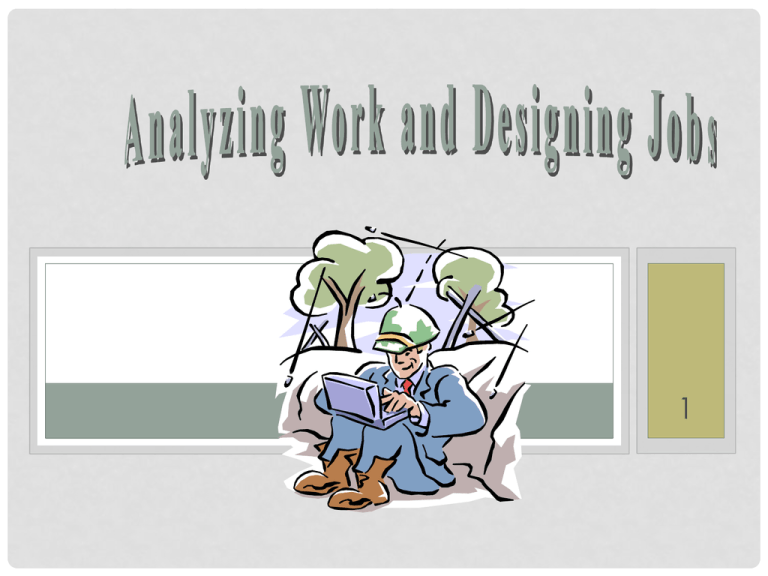
1 JOB ANALYSIS • The process of collecting information about a job. It finds out the anatomy of the job. It finds out the contents of an existing job. • It defines and documents the duties, responsibilities and accountabilities of a job and the conditions under which a job is performed. JOB ANALYSIS METHODS • Observation method – job analyst watches employees directly or reviews film of workers on the job. • Individual interview method – a team of job incumbents is selected and extensively interviewed. • Group interview method – a number of job incumbents are interviewed simultaneously. JOB ANALYSIS METHODS • Structured questionnaire method – workers complete a specifically designed questionnaire. • Technical conference method – uses supervisors with an extensive knowledge of the job. • Diary method – job incumbents record their daily activities. • The best results are usually achieved with some combination of methods. Job Analysis Job Descriptions Job Specifications JOB DESCRIPTION • This is prepared based on the data collected through job analysis. It is a narration of the content of a job. It is a description of the actual and duties performed in a job, the relationship of the job with other jobs, the equipment and tools required, the nature of supervision, working conditions and hazards of the job. JOB DESCRIPTION It is a statement containing item such as • Job title • Location • Job summary • Duties • Machines, tools, equipments • Materials and form used • Supervision given or received • Working conditions • Hazards SAMPLE JOB DESCRIPTION 8 JOB SPECIFICATION • It focuses on the person doing the job. It states the minimum qualifications, skills, physical and other abilities, experience, judgment and other attributed required to do the job well. SAMPLE JOB SPECIFICATIONS 10 IMPORTANCE OF JOB ANALYSIS • Job analysis is so important to HR managers that it has been called the building block of all HRM functions. • Almost every HRM program requires some type of information determined by job analysis: • Work redesign • Human resource planning • Selection • Training • Performance appraisal • Career planning • Job evaluation TRENDS IN JOB ANALYSIS • • • • • Organizations are beginning to appreciate the need to analyze jobs in the context of the organization’s structure and strategy. Organizations are recognizing that today’s workplace must be adaptable and is constantly changing. Job analysis must detect changes in jobs as time passes. Dejobbing consists of viewing organizations as a field of work needing to be done rather than a series of jobs held by individuals. Organizational structures require the broader understanding that comes from an analysis of work flows. 12 EXERCISE CONTEXT: Lucy's RESTAURANT • 4 Tables -- serving 40 meals per day • Open for Breakfast and Lunch -- 1 Shift • There are three employees • Group Deliverables: • Design three positions. Each position must include the tasks, duties, and responsibilities that it entails. • Pick a group spokesperson to share the position descriptions with the class. 13 THANK YOU

